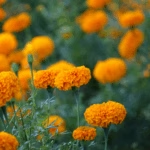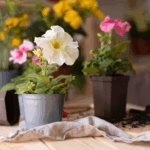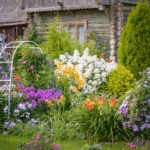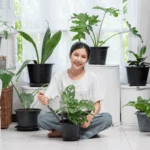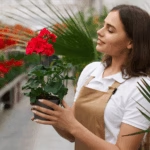Introduction
Container gardening is one of the easiest ways to start gardening, especially for those with little or no yard space. Whether you live in an apartment, have a small balcony, or simply want to add greenery to your patio, container gardening offers flexibility, creativity, and convenience.
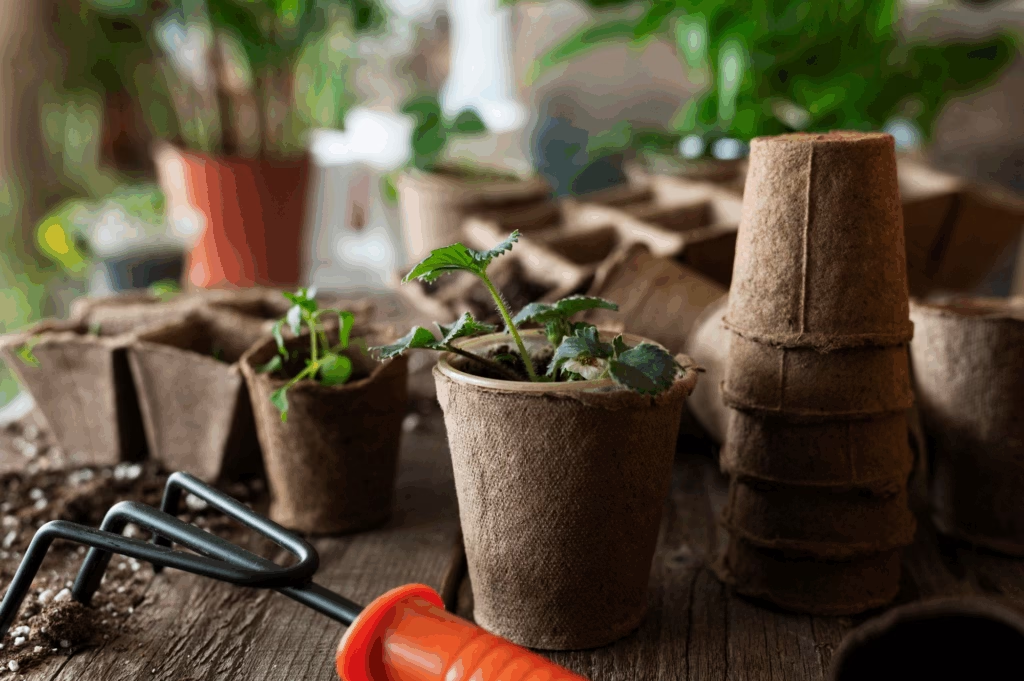
For beginners, it can feel overwhelming to know where to start—what kind of containers to use, which plants grow best, and how to care for them. This guide provides container gardening ideas for absolute beginners, covering everything from plant selection to soil, watering, and easy DIY projects.
1. Choosing the Right Containers
The container you choose can make or break your garden.
- Plastic Pots: Lightweight, affordable, and easy to move, but not always eco-friendly.
- Terracotta Pots: Breathable and classic in appearance, though they dry out quickly.
- Fabric Grow Bags: Excellent for root health, lightweight, and reusable.
- Recycled Containers: Buckets, crates, or even old kitchenware can be repurposed.
Tip: Ensure containers have drainage holes to prevent root rot.
Related: Learn more from our guide on balcony gardening.
2. Best Soil Mix for Container Gardening
Unlike garden beds, container plants rely entirely on the soil mix you provide. Use a lightweight, well-draining potting mix.
Basic beginner-friendly recipe:
- 50% potting soil
- 25% compost for nutrients
- 25% coco coir or perlite for drainage
Avoid garden soil—it compacts easily and prevents proper drainage.
3. Easy Vegetables to Grow in Containers
Vegetable gardening is possible even in small pots. Some of the easiest choices for beginners include:
- Tomatoes (cherry or dwarf varieties)
- Peppers
- Lettuce and spinach
- Radishes
- Green onions
Use deeper pots (12–18 inches) for root crops and smaller pots for leafy greens.
4. Herbs for Everyday Cooking
Herbs are perfect for beginners since they thrive in small spaces and provide fresh flavor in the kitchen.
Popular beginner-friendly herbs:
- Basil
- Mint
- Parsley
- Thyme
- Coriander
They grow well in small 6–8 inch pots placed on sunny windowsills or balconies.
5. Flowers to Brighten Small Spaces
Container gardens do not have to be just about food. Adding flowers creates color, fragrance, and attracts pollinators.
Best beginner flowers:
- Marigolds
- Petunias
- Geraniums
- Pansies
- Zinnias
6. Watering Techniques for Container Gardening
Containers dry out faster than ground soil. Beginners often overwater or underwater.
Tips:
- Check soil moisture with your finger—water only if the top inch feels dry.
- Water deeply until excess drains from the bottom.
- Use self-watering containers or DIY drip systems for consistency.
Further Reading: Explore hydroponic farming for water-efficient gardening.
7. Fertilizing Container Plants
Because nutrients drain away quickly in pots, fertilizing is crucial.
Options for beginners:
- Liquid organic fertilizers (compost tea, seaweed extract)
- Slow-release granules
- Homemade compost
Feed every 2–3 weeks for strong, healthy growth.
8. Sunlight Requirements
Most vegetables and herbs need at least 6 hours of direct sunlight daily. If your balcony or windowsill is shady:
- Choose leafy greens like lettuce or kale, which tolerate partial shade.
- Consider grow lights for indoor setups.
9. Creative Container Gardening Ideas
Container gardening allows for creativity. A few beginner-friendly ideas:
- Tiered Shelves: Stack containers vertically to save space.
- Hanging Baskets: Perfect for strawberries or trailing flowers.
- Rail Planters: Attach to balcony railings for herbs and flowers.
- Recycled Jars: Grow microgreens indoors in glass jars.
10. Pest Management in Container Gardening
Even small gardens face pests. Eco-friendly solutions include:
- Neem oil sprays
- Soap-water sprays for aphids
- Companion planting (e.g., marigolds to deter pests)
11. Seasonal Container Gardening
Rotate plants with the seasons for continuous harvests.
- Spring: Lettuce, radishes, pansies
- Summer: Tomatoes, peppers, zinnias
- Autumn: Kale, spinach, chrysanthemums
- Winter (mild climates): Herbs like parsley and thyme
12. DIY Projects for Beginners
Gardening does not have to be expensive. Try these beginner-friendly DIY ideas:
- Make a vertical garden using a wooden pallet.
- Use old shoe organizers as herb planters.
- Turn broken buckets into strawberry towers.
Conclusion
Container gardening is the simplest way for beginners to start growing vegetables, herbs, and flowers at home. With the right containers, soil mix, and watering routine, you can enjoy a thriving garden even in the smallest spaces.
Remember, success in container gardening comes from experimenting and learning. Start small, grow a few plants you enjoy, and expand as your confidence grows.
Call to Action: Ready to begin your container gardening journey? Visit Agzora.com for practical tips, eco-friendly tools, and high-quality seeds tailored for beginners.

